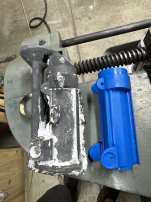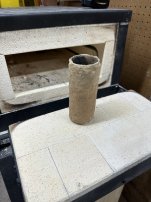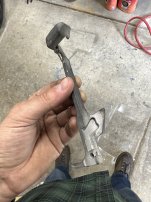FJsapper
Cast Iron
- Joined
- Nov 18, 2020
- Location
- Sterling Heights, MI
I am looking at investment casting to produce four modestly complicated small parts. They have thru holes and weird pockets that would make traditional casting less suitable. I believe investment would get me pretty close to net shape with just cleanup and threading to be done at the end.
I’m getting the parts high resolution scanned and will look to send the files off to be 3D wax printed. Currently planning on adding 2.5% to account for wax and metal shrinkage. Does that sound about right? Are there different shrink factors on different features such as long ID bored? What kind of struggles are associated with cleaning up the print lines prior to coating with refractory?
If anyone has a recommendation for a good 3D printing outfit for this type of work I’d love to hear about it. I plan on dipping and casting the parts myself, just need to get the complex wax work taken care of so I don’t go down yet another rabbit hole…thanks!
I’m getting the parts high resolution scanned and will look to send the files off to be 3D wax printed. Currently planning on adding 2.5% to account for wax and metal shrinkage. Does that sound about right? Are there different shrink factors on different features such as long ID bored? What kind of struggles are associated with cleaning up the print lines prior to coating with refractory?
If anyone has a recommendation for a good 3D printing outfit for this type of work I’d love to hear about it. I plan on dipping and casting the parts myself, just need to get the complex wax work taken care of so I don’t go down yet another rabbit hole…thanks!



 . After trial and error of like 4 different crucible types I finally decided to just make my own. This little fella has chugged through three pours so far and shows no appreciable wear! The inside surface has vitrified to a nice dark chocolate brown, or maybe it’s something left behind from the stainless, not sure..
. After trial and error of like 4 different crucible types I finally decided to just make my own. This little fella has chugged through three pours so far and shows no appreciable wear! The inside surface has vitrified to a nice dark chocolate brown, or maybe it’s something left behind from the stainless, not sure..

